Every once in a while someone will come into your life and move you. Julie did that for me.
Today I interview with Julie M Elman creator of The Fear Project. It's a bit lengthy but so worth your time.
1. Introduce yourself and tell us who you are, what you do and how you got started drawing other people's fears.
I am an associate professor in the School of Visual Communication at Ohio University in Athens, where I teach courses in publication design. In my classes, I talk a lot about moving beyond the fear of that scary blank page.
The Fear Project sprang from my own fears, one of them being how to manage the creative process. I also watched my design students struggle with their own fears of creating and taking visual risks, and I wondered how to best encourage them to move past creative blocks.
I was deeply inspired by the concept of “automated directives,” where one brings more structure to the chaos of doing creative work (I was introduced to this concept while watching a creativemornings.com video presentation by the Oregon-based illustrator and educator Kate Bingaman-Burt. http://vimeo.com/31610153).
While sitting at my kitchen table one evening, I started the Fear Project. I simply wanted to explore other people’s fears through their words and my visuals. As a former newspaper designer, I felt this compulsion to approach my project in a more journalistic way. I asked people what their fears were, and I either wrote them down, or I used my iPhone to record them describing their fears.
The topics have run the gamut and have included failure, losing a child, centipedes in the shower, the impulse to jump off high places, small holes, escalators, dying alone and needles. Participants in this project have included neighbors, students, colleagues, family members — and as the project has grown, more and more people I do not know have reached out to me with their fears.
I decided that for the first seven months, I would create and post online three fear pieces a week, come hell or high water. What started out as a personal exercise to ignite my own creative process slowly evolved into something more universal and more substantive.
After I created my 90th fear piece (a mini goal I set for myself), I just kept going and never looked back. I've created more than 125 fear pieces so far, I think. Actually, I've lost count.
2. How does drawing one's own fears help a person?
I have a heard from a handful of people that after seeing my visual interpretation of their fear, they feel less burdened by it. One person told me that she saw humor and lightness in my piece about experiencing bumpy rides on airplanes, and it made her less afraid to fly.
Another person said that seeing her fear in a tangible way made it "less scary." She said she felt a sense of peace and less weighed down. Another person wrote on his blog that as he approached an impending surgery, "being able to share my fears [with Julie] and have her create art actually felt very supportive."
I want to make note that I am not a psychologist — I have zero training in the field of any kind of therapy. So, my ideas behind the power of art to express fears is just based on my intuition and personal experiences.
I have come to learn that many people feel validated after seeing their fears visualized in an interpretive, yet non-judgmental way. They can come face to face whatever fears they have in a non-threatening way.
3. What prevents people from breaking through fear?
Again, I'm not a psychologist — but I have my own layperson hunches about what prevents people from breaking through fear. I think, to start with, it stems from a fear of simply naming the fear, of truly owning it.
People may believe they're alone in having a certain fear. They may feel shame. They can't find a way to face it, so they bury it, or do their best to ignore it.
As I worked on my project, I made a conscious decision not to explore the concept of fear in a formal, scholarly way. I did not want to get bogged down in others' definitions of what fear was, where it comes from, how people cope, etc.
When working with someone's fear, visually, I allow myself to "feel" my way through the making of the piece. I let surprises happen. I try not to analyze what I'm doing too much.
Having said this, I am at the point now where I feel ready to start making a concerted effort to read more about fear and how pervasive it is in our culture.
4. What have you learned about fear in your process?
During my process of illustrating other people's fears, I have become much more aware of just how pervasive fear really is. I'm starting to notice more and more how the topic of fear creeps into the collective conversation (interviews, articles, essays, everywhere) — and I started to think about how fear can be either crippling to people, or a driving force to motivate people to move past it.
People often ask me if it’s depressing to work on these fear pieces. I’ve never internalized all these fears coming my way (although I’ve certainly shared some of these fears).
What I didn’t expect were the responses I’ve received from people. When people express gratitude, or tell me they feel less alone with their fear, I am more aware of how fear is such a common thread for just about everyone.
I have met very few people who are truly stumped when I ask them what their fears are. One thing I notice about these (few) people is that they are very laid back and they never appear to get ruffled, ever.
5. What's your best advice on overcoming fear?
Oh! If only I practiced what I preached, when it comes to letting go of fear. I'm not really sure what my general advice would be for others to overcome fear. It probably depends upon what the fear is.
My tendency, with myself and what I tell others, is to "Dare to suck." I know that sounds crass — but it's just shorthand for taking risks and proving to yourself that the sky won't fall if you fail.
The "dare-to-suck" sentiment was drilled into me when I worked at a newspaper that embraced taking chances and trying new things. In the classroom, I encourage students to go for that far-fetched idea and risk falling flat on their faces.
When it comes to some life decisions that extend far beyond homework assignments, or art projects, etc., I'm all for "jumping off the cliff" and then, well, landing and having faith that you'll figure it out.
I know, I know — platitudes galore here. I can only speak from my own experiences with fear — but I have found that facing the fear head-on and walking through it is one way to lessen its power. Sometimes, I've discovered, things are a lot bigger and scarier in our own heads.
6. Tell us about one of your own fears that you still struggle with?
I may dwell in this world of fear with my artwork, but, fortunately, I am not frozen with fear in my day-to-day life. I've done some things that some people might consider to be fearless, and I certainly felt fearless when I was doing these things, at that time — I've lived in different states, tried on different jobs, gone on a six-month hike with little of that experience under my belt.
I've said "yes" to many things, before I had a chance to let fear blurt out the word "no." I just deal. I have learned that "Onward!" is a powerful word and attitude.
One general fear I have has to do with the awareness of the fragility of life. I was in a serious car accident in the mid-1960s, when I was 6 years old. My dad was driving the car, and he crashed into a telephone pole. (Whenever I visit home, I am hyper-aware of that particular site when driving by.)
I flew through the front windshield, and had major head and facial injuries. My parents were told at that time that if I lived, I'd be a vegetable. The doctors were wrong. I was out of the hospital in two weeks, and I recovered. A couple of surgeries later in life helped minimize the facial scars.
After the accident, I became acutely aware of this fine line between the different paths one's life can take. In one moment, I was just a kid playing with dolls, wearing my new watermelon-print dress.
In the next instance, I was unconscious, had glass shards in my head and face, was covered in blood and near death's door.
So, this fear has to do with crossing over that line, again. There's no telling when or how it will happen. It can be anything. I could fall off a curb, crack open my head and die.
I could get hit by a driver who's texting. I could … go on and on here. I read news stories about the most random things happening to people around the world, and I think, "Oh My God. What if that happened to me? What if I get that extremely rare flesh-eating disease?"
My life could be so different in an instant. Or it could be over in an instant. But, as I said, this fear doesn't have a huge impact on my daily life. I try to keep it on the back-burner and think, "Onward!"
7. Do you draw your own fears?
I have drawn a handful of my fears. My intent, when starting the Fear Project, was to focus more on other's fears. When trying to produce three fear pieces a week, though, sometimes I found myself sitting at the table without a fear to draw, so I'd work on illustrating one of my own.
I've visualized my fear of having a brain aneurysm, my fear of playing an instrument in front of others, my fear of driving down the road and encountering an idiot driver who's texting.
When I got sick last summer, and was dealing with some pain, I visualized some of my fears around that (and they were horrible little drawings, but I just didn't care. I still posted them).
With this project, though, my main focus is still to visualize other people's fears. (I have this outrageous fantasy of walking around the world — could take me four or five years — and talking with people along the way about their fears. I'd illustrate along the way. I often wonder what we call have in common, as humans worldwide, when it comes to fear. I want to learn about it first-hand.)
Bio: Julie M Elman is an associate professor in the School of Visual Communication at Ohio University in Athens, Ohio, where she teaches courses in publication design. She received an MFA in photography and a BFA in commercial art. She has extensive experience in newspaper design and is the co-author of The Newspaper Designer’s Handbook, 7th edition, which was published in 2012.
In 2008, Elman designed the New York Times best-selling photography book The Rise of Barack Obama for Pete Souza, who is now chief White House photographer. She lives in Athens, Ohio, with her husband and numerous furry critters. She feels fearless when she plays the banjo, even though she's still really quite green with it. Follow The Fear Project on Facebook and Twitter.
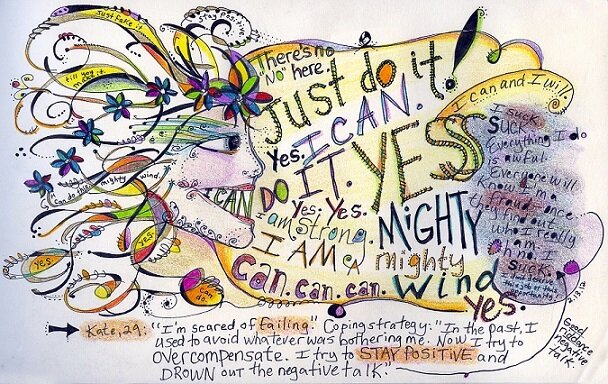

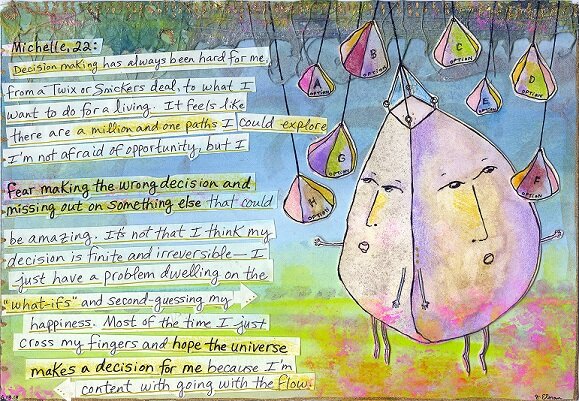


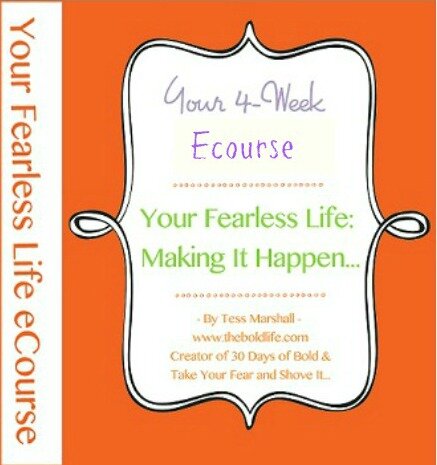
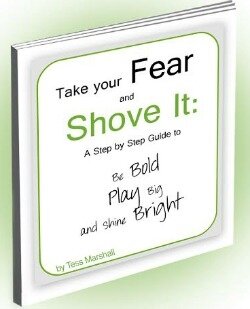
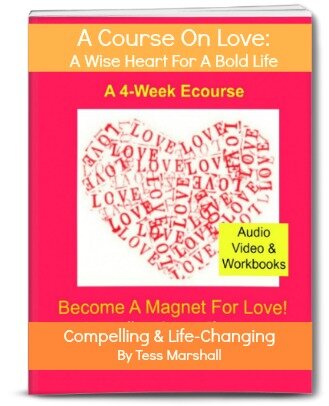
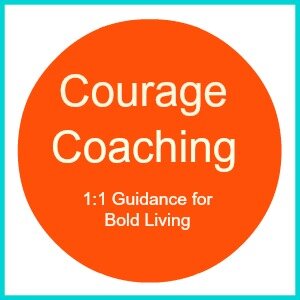

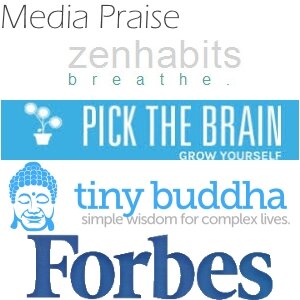

Great piece Tess. What a brilliant idea the illustration of fears…it makes total sense that we can perceive our fears in a new way when seen through this lens.